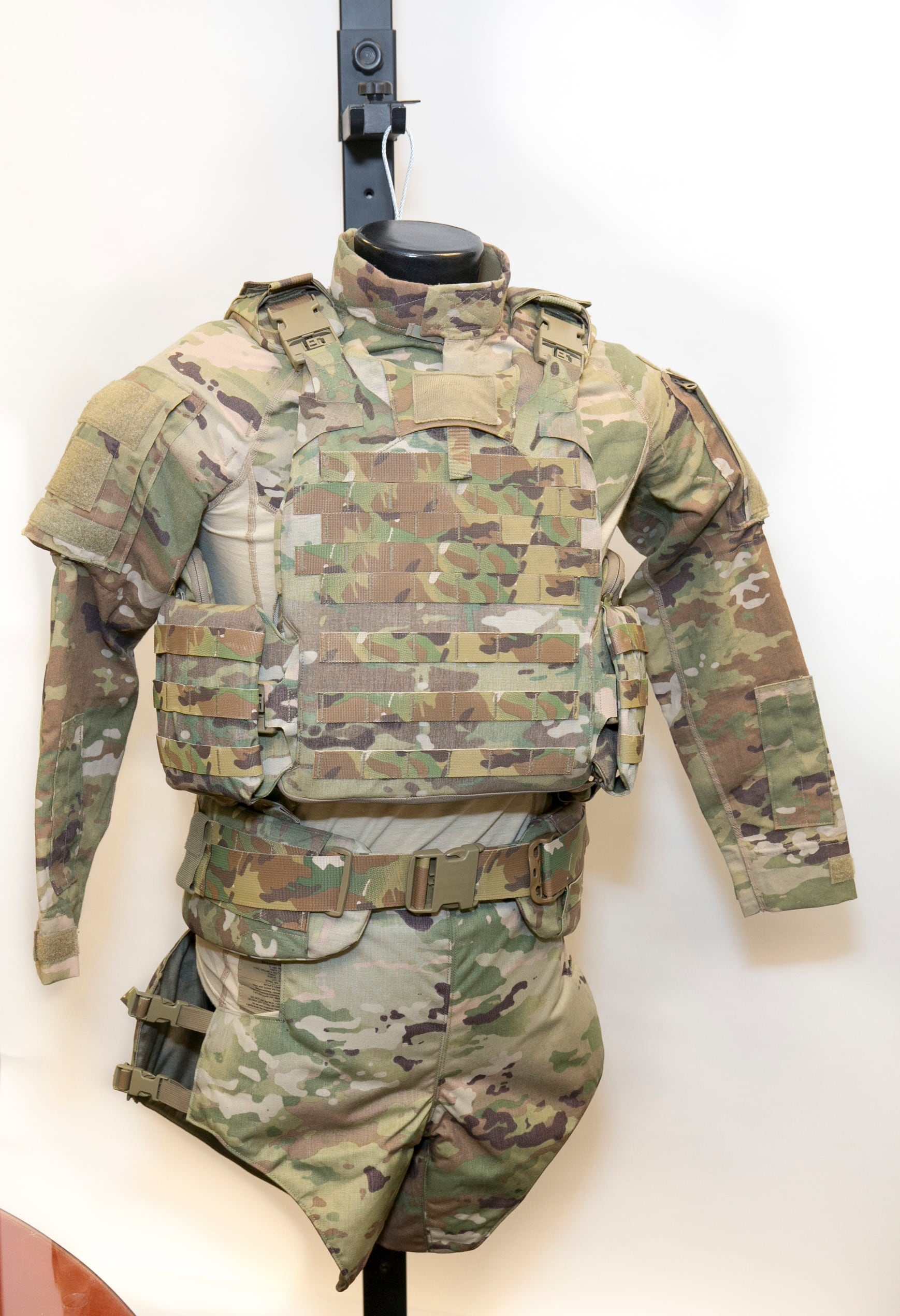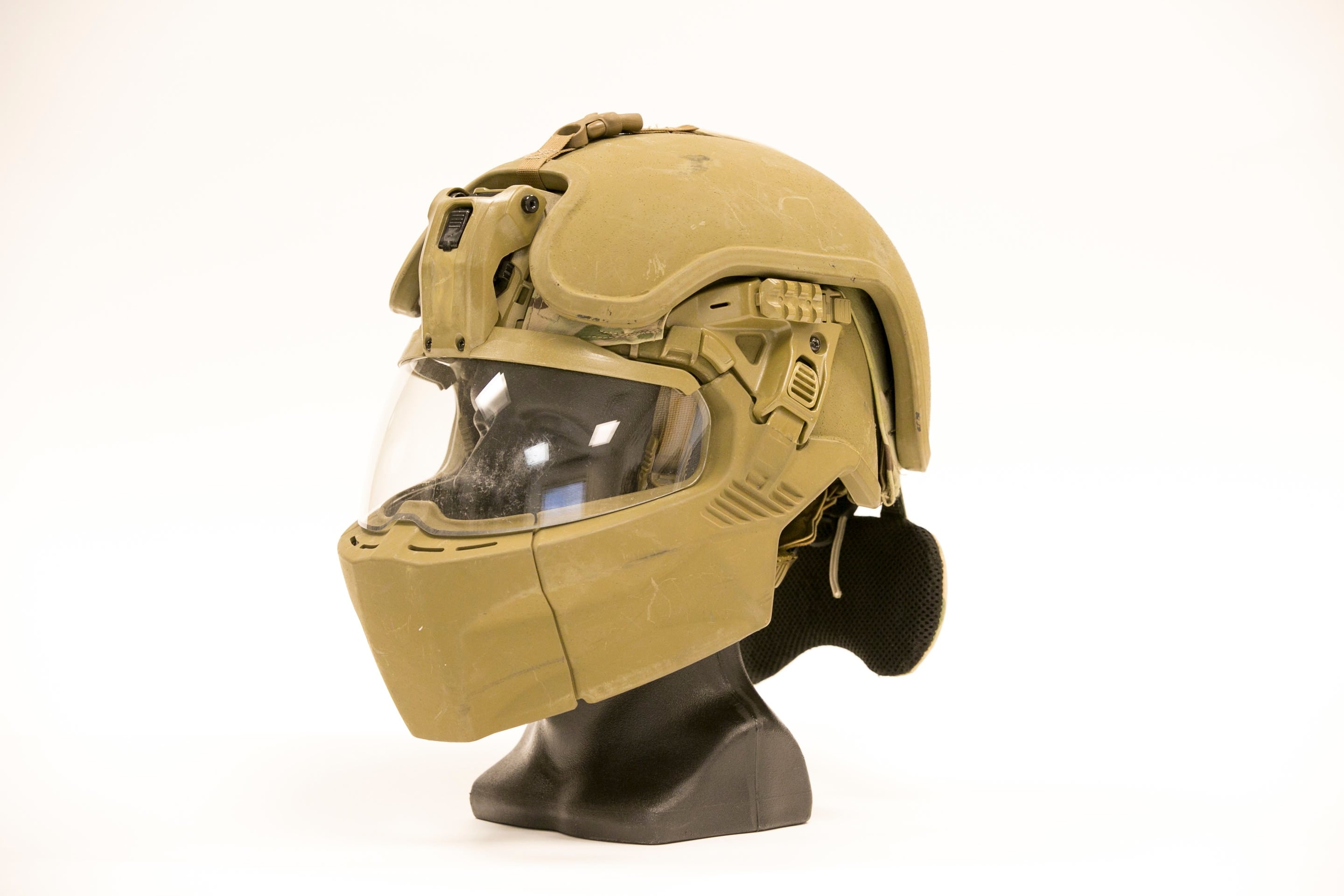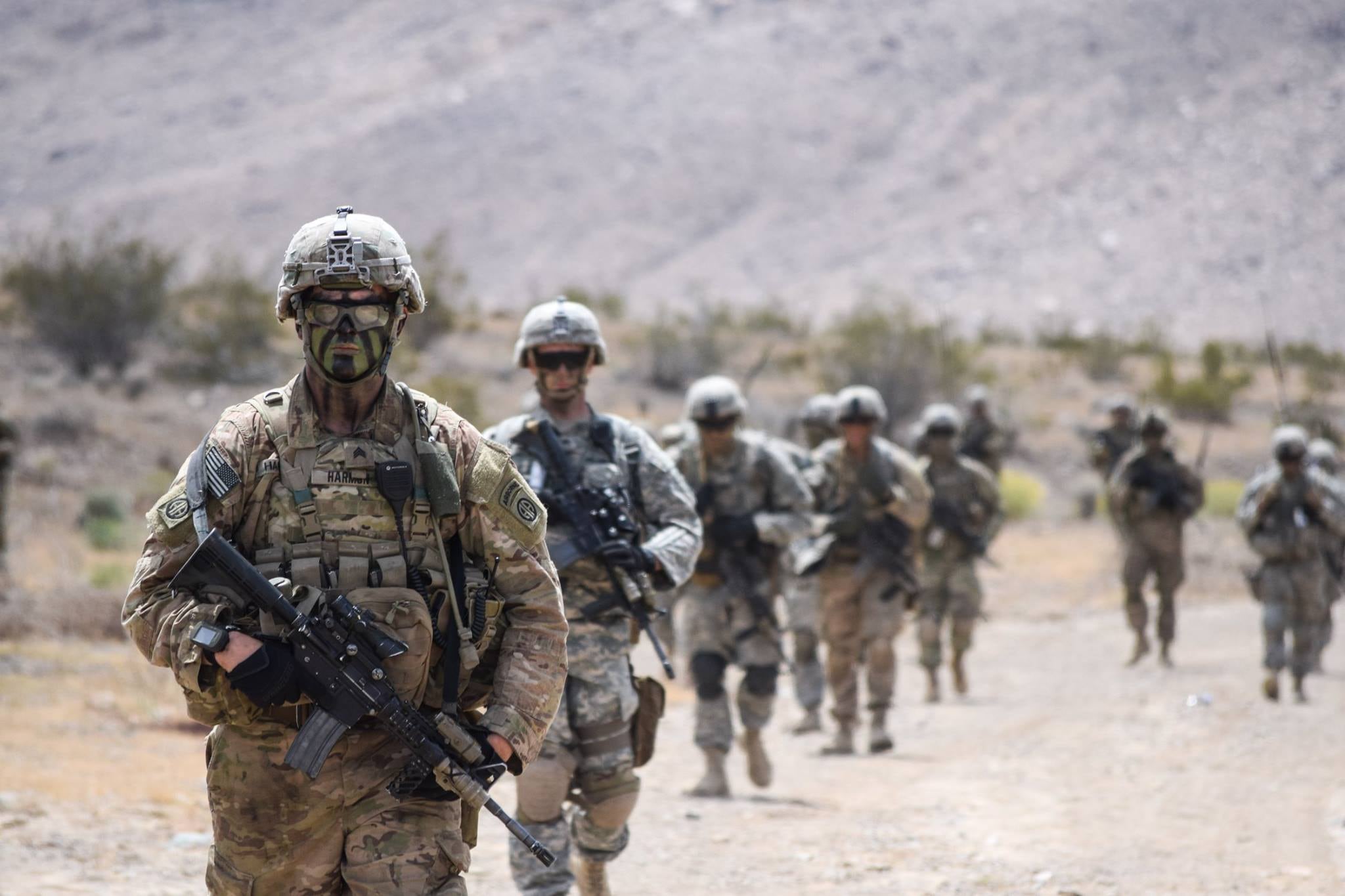The Army is pushing forward with its efforts to enable soldiers to carry a lighter load, especially while deployed.
From 2018 to 2021, troops could see a replacement for the improved outer tactical vest, new head protection that resembles a motorcycle helmet, and eyewear that goes from light to dark in under a second.
The new gear is under development at Program Executive Office Soldier at Fort Belvoir in Virginia, and is part of the new Soldier Protection System.
A spokesman for the office said soldiers who are deploying are first in line for any newly released equipment.
From IOTV to TEP
The improved outer tactical vest protects troops’ vital areas, but at 26 pounds, some have criticized its weight.
The Army is working on something that’s 5 pounds lighter but keeps soldiers just as safe: the torso and extremity protection system, or TEP, offers soldiers a wide degree of scalability.
The TEP includes a modular scalable vest, ballistic combat shirt, blast pelvic protection system, and battle belt.

The Army's new Soldier Protection System includes a new vest and an Army combat shirt with built-in protection pieces.
Photo Credit: Alan Lessig / Staff
Depending on the threat level, soldiers can scale it from concealable body armor all the way up to the IOTV configuration, according to Lt. Col. Kathy Brown, product manager for Soldier Protective Equipment at PEO Soldier.
The modular scalable vest provides the same area of coverage as the IOTV, but developers reduced excess bulk, especially around the shoulders and cummerbund.
"It’s really about refining the design of the front and back panels," Brown said.
The modular scalable vest doesn’t have the front or back yoke and collar with ballistic inserts like the IOTV had.
And with the TEP’s ballistic combat shirt, soldiers don’t have to deal with the bulky inserts that snapped onto the IOTV.
The new shirt is made of breathable fabric and includes smaller ballistic protection pieces that are built into the shirt. Even with the built-in pieces, a soldier can wash the shirt normally.

Soldiers can also wear the new blast pelvic protection system, which is worn over the combat pants, to protect their thighs and groin.
Photo Credit: Alan Lessig / Staff
To protect the thighs and groin from shots and burns, soldiers now wear a combination of the pelvic undergarment and pelvic outer garment.
The new blast pelvic protection system replaces those pieces while still protecting against such threats as improvised explosive devices.
It’s worn over the combat pants, and Brown said soldiers have said the blast pelvic protection system feels more like part of the pants than separate pieces.
To add even more weight management to the TEP, a new battle belt will help soldiers transfer weight off their shoulders and onto their hips.
With the battle belt, troops can strap certain items — like a radio —onto their hips instead of onto the vest, which adds weight to the shoulders.
Brown said production of the TEP will probably begin in May, and, depending on the building schedule, soldiers could be issued the torso and extremity protection system in late 2018 or 2019.
Integrated Head Protection System
PEO Soldier is also working on a helmet that will replace the Enhanced Combat Helmet, which soldiers wear while deployed.
The IHPS resembles a motorcycle helmet, and soldiers can attach add-ons to the base helmet.
The add-ons include a visor, a piece that protects the lower jaw, and a protective layer that attaches to the top.
All the attachments together create a "high-threat configuration," Brown said.

The new Integrated Head Protection System can be tailored to fit a soldier's needs. For example, the full face mask likely will be used mostly by vehicle gunners.
Photo Credit: Alan Lessig / Staff
The IHPS also currently has a Picatinny rail mounted on the side for attaching gear, and it also will allow soldiers to attach head-mounted night vision goggles, the Army said.
This head protection system could be available to soldiers by 2020 or 2021.
Soldiers who are deploying will receive the base helmet, but they also will get the attachments based on their mission and military occupational specialty.
For example, vehicle gunners will get the lower jaw add-on, as well as the protective layer for the top of the helmet.
Transition eyewear
Since the new helmet visor doesn't provide protection from the sun, soldiers can wear sunglasses and goggles that transition from clear to dark with the push of a button.
In less than a second, troops can adjust to different environments.

The new sunglasses and goggles have lenses that can transition from clear to dark with the push of a button.
Photo Credit: Alan Lessig / Staff
Although the eyewear won’t be on the list of items that deployed soldiers need to carry, soldiers will be authorized to use them, and commanders can buy them for their troops.
The goggles and sunglasses, which are still being tested before large-scale procurement, each cost $200.
Soldier feedback
Brown said select soldiers tested the new gear for three to five weeks.
"They would go through different training exercises and mission sets," she said. "After, they would come back and provide us feedback through the form of a structured survey or sometimes do a table talk — soldiers sit around and talk about what they like and what they didn't like."
Fort Carson, Colorado, soldiers tested the new gear in December, and those at Joint Base Lewis-McChord in Washington are testing the new head protection.
"We make sure we have multiple human-factor evaluations allowing us to hear from soldiers," she said.
Brown said soldiers who tested the torso and extremity protection system "loved it" because it's "such a streamlined design over the IOTV."
Troops also liked the look of the IHPS helmet, "especially those soldiers who are gunners and ride in the turrets," she said. "They like having additional protection."
The Army is moving in the right direction when it comes to body armor weight, Brown said. "[Soldiers] are starting to see that, hey, this is getting lighter and lighter," she said.
Charlsy Panzino covers the Guard and Reserve, training, technology, operations and features for Army Times and Air Force Times. Email her at cpanzino@militarytimes.com.
Charlsy is a Reporter and Engagement Manager for Military Times. Email her at cpanzino@militarytimes.com.





